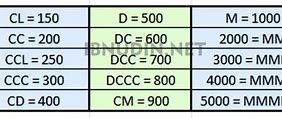
AK-107, dòng súng AK chính xác nhất do Nga phát triển
11/02/2024 10:00 Việt Hùng
ANTD.VN - Súng AK vốn nổi tiếng hoạt động bền bỉ, uy lực mạnh, tuy nhiên chúng lại bị đánh giá là kém chính xác so với đối thủ. Mãi tới khi AK-107 ra đời, yếu điểm này mới được khắc phục.
Theo Theo TWZ, Military Today
Súng AK vốn nổi tiếng hoạt động bền bỉ, uy lực mạnh, tuy nhiên chúng lại bị đánh giá là kém chính xác so với đối thủ. Mãi tới khi AK-107 ra đời, yếu điểm này mới được khắc phục.
The AK-107 is a Russian 5.45×39mm assault rifle developed from the AK-100-series. It features a "balanced" operating system, similar to that used in the AEK-971. In this case, the designation AK does not indicate Avtomat Kalashnikova but Alexandrov/Kalashnikov. The revised designation indicates the incorporation of a new gas system, designed by Youriy Alexandrov, for Kalashnikov-pattern rifles.
These new rifles were derived from the AL-7 experimental rifle of the early 1970s. The AL-7 utilized an innovative balanced gas operating system known as the Balanced Automatics Recoil System (BARS) developed by Peter Andreevich Tkachev of TsNIITochMash that was first used earlier on the AO-38 assault rifle of 1965 that essentially eliminated felt recoil and muzzle rise. The system was modified by Alexandrov, then a junior engineer at Izhmash, and prototypes were produced under the designation AL-7. The AL-7 was considered too expensive for production at the time and the Soviet Army selected the AK-74 instead as the new service rifle. No further development occurred until the mid-1990s when Alexandrov, by then a senior engineer, was directed to update his design for production as a less expensive alternative to the AN-94. The new rifle differs only slightly from the original AL-7. The AK-107 receiver is not fluted and a three-round burst feature has been added. There is otherwise little difference between it and the AL-7 prototypes.
The AK-107, AK-108, and AK-109 represent a significant change to the Kalashnikov operating system originally designed in the late 1940s. This system uses a recoil-reducing countermass mechanism with two operating rods that move in opposite directions, thereby providing "balance". One operating rod, the upper, has a gas piston facing forward while the lower also has a gas piston. The gas tube at the forward end of the handguard is double-ended to accommodate the two rods. The enlarged gas tube cover of the upper handguard guides both rods in their travel.
When the rifle is fired, gas is tapped from the gas port to enter the gas tube, driving the bolt carrier to the rear and the counter-recoil upper rail forward. The critical timing of the reciprocating parts is accomplished by a star-shaped sprocket that links and synchronizes both components, causing both to reach their maximum extension, or null point where forces are exactly equal, at exactly the same instant. The felt recoil is therefore eliminated, enhancing accuracy and assisting control during fully automatic fire. The travel distance of the AK-107 reciprocating parts is less than other Kalashnikov designs, so the cyclic rate is higher at 850–900 rounds/min rather than 600 rounds/min on other AK rifles. However, as the felt recoil is virtually eliminated, the manufacturer claims that accuracy is enhanced, especially during burst fire. An enhancement of 1.5 to 2 times, compared to the original AK-100 series, has been reported.[2]
The AK-107 is a selective fire weapon, with a three-round burst capability in addition to semi-automatic and fully automatic firing modes. The system on the AK-107 resets to three-round burst each time the trigger is released, even if only one or two rounds were fired. External differences between the AK-107 and its predecessors are minor. They include a modified ejection port and a much thicker operating rod cover. The method of attaching the receiver cover now involves a rotating latch in place of the traditional Kalashnikov button at the rear of the receiver cover. The rear sight is also attached directly to the receiver cover rather than to the receiver itself and the selector has four positions instead of three. Optical and night sights can be installed, the rifle can also accept a 40 mm GP-25 grenade launcher.
The AK-108 is a version of the AK-107 chambered in 5.56×45mm NATO, and the AK-109 is a less known and produced version chambered in 7.62×39mm. Like the rest of the AK-100 series, these newer AKs use synthetic materials such as black fiberglass-reinforced polymer for the pistol grip and heat shield. This material is more cost efficient and much stronger than the original AKM/AK-74 wood furniture.[3]
In March 2013, Izhmash debuted a civilian version of the AK-107/AK-108 rifle designated the Saiga MK-107. The MK-107 features improvements over the original AK-107 design including a rounded ergonomic charging handle, a button-style safety above the trigger guard, AR-15-style pistol grip and stock (made by Israeli firm CAA Tactical), and full length top picatinny rail.[4]
Wikimedia Commons has media related to
Bách khoa toàn thư mở Wikipedia
AK-107 là loại súng trường tấn công thuộc dòng súng AK do Nga chế tạo, loại này kết hợp được nhiều ưu điểm của cả loại AK-74M lẫn AK-101 và được trang bị thêm súng phóng lựu GP25.
Nhiều bộ phận của AK-107 vốn được làm bằng gỗ hoặc kim loại trong các đời AK trước đã được thay thế bằng chất liệu nhựa. AK-107 được trang bị thêm thiết bị ngắm của AWM, laser và đèn chiến thuật.
AK-107 và AK-108 là những thế hệ mới của dòng súng trường tấn công AK. Điểm khác giữa hai loại súng này là AK-107 dùng đạn cỡ 5,45 x 39 mm (giống AK-74), còn AK-108 dùng đạn tiêu chuẩn NATO 5,56 x 45 mm (thế hệ AK-101 phục vụ xuất khẩu cũng dùng cỡ đạn này). Cả hai đều khác với các thế hệ AK trước ở hệ thống lên đạn kiểu tự động cân bằng lực giật (BARS). Ngoài ra thế hệ mới này có nhiều bộ phận làm bằng sợi thủy tinh, nhựa tổng hợp. Nhờ đó, chi phí sản xuất và khối lượng súng được giảm đáng kể.
Wikimedia Commons có thêm hình ảnh và phương tiện truyền tải về
- Tổng biên tập: Thiếu tướng ĐOÀN XUÂN BỘ - Các phó tổng biên tập: Đại tá NGÔ ANH THU, Đại tá TRẦN ANH TUẤN Đại tá LÊ NGỌC LONG Đại tá NGUYỄN HỒNG HẢI (Phụ trách nội dung). - Trưởng phòng Biên tập Báo Điện tử: Đại tá TRỊNH VĂN DŨNG























